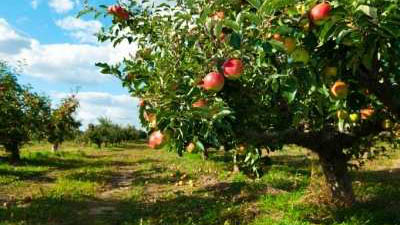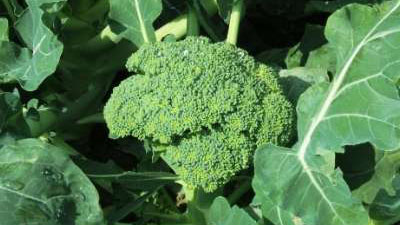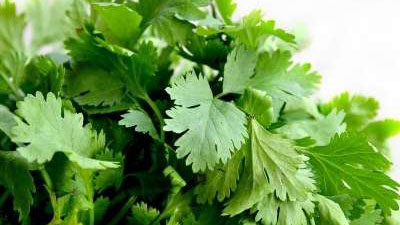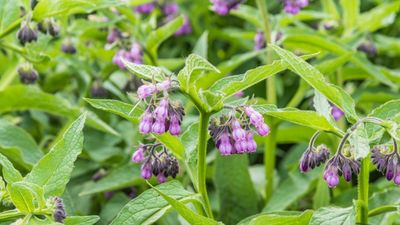How to Grow Sweet Potatoes in Your Garden

Summary
Sweet potatoes (Ipomoea batatas) are a delicious crop that is high in vitamin content. It is a warm season crop that grows best in long, hot growing seasons. There are many varieties to choose from, with shorter maturity varieties suited to cooler climates. Sweet potatoes are members of the morning glory family, are relatively pest free, and can be stored for a long time after harvest.
Recommended Sweet Potato Varieties
Sweet potatoes are classified as soft-fleshed or firmfleshed. The soft-fleshed varieties are sweet and have orange flesh and are often called yams. The firm-fleshed varieties have light orange, yellow, or even white flesh and can be stored for longer periods. Sweet potatoes can have long vines, but many compact bush varieties now exist. Vines can be trimmed on non-bush varieties. Try any of the varieties listed below by matching the maturity period to local growing conditions. Plants generally have to be ordered from seed catalogs or specialty growers if specific varieties are desired. Most varieties perform well in Utah.
| Varieties | Days to Maturity | Skin and Flesh Color |
|---|---|---|
| Beauregard | 105-110 | Dark orange flesh, light purple skin |
| Bush Porto Rico | 110 | Orange flesh, copper skin |
| Centennial | 90-100 | Orange flesh, orange skin |
| Georgia Jet | 90-100 | Orange flesh, red or purple skin |
| Jewel | 120-135 | Orange flesh, copper skin |
| Sumor | 110-120 | Light yellow flesh, tan skin |
| Vardaman Bush | 110 | Orange flesh, gold skin |
| Carolina Bunch | 110-120 | Deep orange flesh, copper skin |
How to Grow Sweet Potatoes
Climate
Sweet potatoes grow best in warm to hot climates. Plants can be damaged by temperatures below 50ºF. The roots mature in 4 to 5 months.
Soil
Sweet potatoes grow best in all soil types provided they are fertile, moist, well drained and nutrient rich. Centennial is a clay tolerant variety.
Soil Preparation
Before planting, determine fertilizer needs with a soil test and use the recommendations given with the test report. If fertilizer applications are warranted, work the fertilizer into the top 6 inches of soil. If you fertilize with compost, apply no more than 1 inch of wellcomposted organic matter per 100 square feet of garden area. Work complete fertilizers into the soil to a depth of 6 inches. Then form 8-10 inch tall raised beds to provide good drainage and a place for root development to occur.
Plants
Sweet potatoes are grown from slips, which are plant sprouts from the root. They can also be grown from vine cuttings. If you only need a few plants, grow your own slips from a root suspended in a container of water. To grow more plants, place several sweet potato roots about one inch apart in a hotbed and cover with 2 inches of sand or light soil. Add another 1 to 2 inches of sand when the shoots begin to appear. Keep the soil in the bed moist throughout the sprouting period, but never allow it to become waterlogged. Maintain a soil temperature of 70-80°F. The slips are ready to pull in about 6 weeks (when they are rooted and 6 to 8 inches tall).
Planting and Spacing
Slips are planted in the field after the danger of frost is over. Plant slips in rows 36-48 inches apart, spaced 12 inches apart within the row. A good slip should have 4-5 leaves and a healthy root system. Water regularly after planting to help the plants establish.
Mulches
Use of mulches will conserve moisture and reduce weed problems. For early sweet potatoes, plant through black plastic mulch up to ten days before planting in uncovered soil. Use floating row covers for additional frost protection.
Water
Sweet potatoes are quite drought tolerant but grow best when provided with ample water after planting, and as they grow. As plants mature, water with moderation as late watering can cause root cracking.
Fertilization
In addition to the fertilizer applied at planting, sweet potatoes should be side dressed with additional nitrogen fertilizer at ½ lb. (21-0-0) per 100 square feet in early July for optimum vine growth and tuber sizing.
Problems with Growing Sweet Potatoes
Weeds
Control weeds when the plants are young and getting established. Use a mixture of cultivation and mulches. Once established, the vines will out-compete most weeds. Avoid deep cultivation that can damage the roots and slow vine extension.
Sweet Potato Insects and Diseases
Insect |
Identification |
Control |
|---|---|---|
| Flea Beetles | Small white maggots that feed on and burrow into the developing root. | Use soil applied chemicals at planting or cover young emerging seedlings with fabric row covers to exclude egg-laying adults |
| Cutworms | Green, reddish, or black caterpillars (~2 inches long). Cutworms feed near the soil surface and eat through the stem causing plants to fall over and die. | Control weeds and debris in the garden that provide cover for worms. Use appropriate insecticides if populations are high. |
Disease |
Symptom |
Control |
| Scurf | Black fungal spots on infected roots. | Grow resistant varieties, rotate planting areas; don’t over water. |
| Black Rot | Fungal diseases that cause decay and rotting of the root. Causes sunken lesions on young slips and mature roots. | Grow resistant varieties; rotate planting areas; don’t over water. |
How to Harvest and Store Sweet Potatoes
Sweet potatoes can be harvested when roots are 1½ to 2 inches thick. Some roots may be “harvested,” starting in late summer, by digging into the side of the bed and removing developing roots while leaving the plant in place. Most gardeners wait until the foliage starts to turn yellow or after the first frost damages the leaves, but before the soil freezes. Use a spading fork or shovel and careful dig up the swollen roots being careful not to bruise, cut or otherwise damage them. The roots store best when cured for 1-2 weeks at 80°F and then stored in a cool, dry location (50-55º F). When properly cured, sweet potatoes can be stored for 3-4 months.
Sweet Potato Plant Productivity
Sweet potatoes produce very large roots in a long growing season. Expect 1-2 lbs. of roots from every plant. Plant 5-10 slips per person in order to have sufficient for fresh and storage purposes. Productivity depends on variety planted.
Sweet Potato Nutrition Facts
Sweet potatoes are an excellent source of vitamin A and vitamin C, carbohydrates, and fiber. They are also supply lots of calcium and iron.
Frequently Asked Questions
Q. Why are the tubers cracked when I dig them up?
Heavy rains or over irrigation during the 3 to 4 weeks before harvest will cause the roots to split. Sweet potatoes like a dry period before harvest which helps cure the roots and prepares them for storage.
Q. Are yams and sweet potatoes the same thing?
Moist-fleshed varieties of sweet potato are often called “yams.” However, sweet potatoes are not true yams, which belong to a different plant family, called Dioscoreaceae. Sweet potatoes belong to the morning glory family (Convolvulaceae) and are related to morning glory and field bind weed. True yams are rarely found in local grocery stores, vary greatly in size, need a very long, warm growing season, and are commonly grown only in the tropics.
Published April 2020
Utah State University Extension
Peer-reviewed fact sheet
Download PDF
Authors
Jeran Farley and Dan Drost, Vegetable Specialist
Related Research







